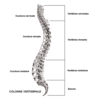Tips to apply when you have lumbago

Lumbago or lumbalgia are two words that mean "pain in the lumbar region" ("algie" meaning pain and "lomb" referring to the lumbar region). Thus, to have a lumbago is to have pain in the lumbar region which corresponds to the last 5 vertebrae of the spine.
"I have kidney pain" or "I've had a kidney turn" are also expressions to designate a pain in the lower back. However, these expressions are wrong because in reality the kidneys are located at the level of the first lumbar vertebrae and therefore much higher than we think.

There are many causes of lumbago and the triggers vary from one lumbago to another: it goes from "I carried something very heavy" to "I don't understand, I just turned the key in the lock" to "uh, it's a little embarrassing, you see, last night I was with my husband and...". In short, there are many reasons, in some cases it is the last straw (accumulation of dysfunctions for months or even years) and in other cases it is too much effort over a short period of time.
Be careful, it can happen that low back pain is the symptom of an organic pathology. Your osteopath will be able to refer you to a doctor if you suspect a medical pathology. In this article, you will find advice that is applicable regardless of the cause (excluding organic pathologies).
1. Move, walk: don't stay in couch mode

A lumbago, it hurts, even very much, and we tend to want to stay in bed rather than to move. And yet, you should move as much as possible. Go for a walk and if it is really too difficult, try to move your legs and stretch your lower back.
Most of the time, movement is possible and many patients don't move for fear of making their problem worse or to rest their body. You are not sick, just a little damaged.
Move, circulate the body fluids (blood, lymph, etc.), this will prevent the muscles that protect your joints from melting and drain toxins, especially through the contraction and relaxation of muscles.
2. Drink water

Your body is 60% water, so water is necessary for your recovery. Hydration helps to drain toxins and therefore accelerate the drainage of inflammation and the process of muscle relaxation.
A contracted muscle is a bit like a dirty sponge, to wash it you have to soak it with water and squeeze it. It is the same for a muscle, drink water and squeeze it while stretching it.
3. Stretch your back

Lumbago hurts because of the contraction of the muscles that has taken place to protect the area. It is mainly the muscles that hurt. It is therefore necessary to stretch them to eliminate the inflammation. Moreover, stretching them allows you to mobilize yourself and to revive the machine a little by avoiding that it stiffens.

4. Put on some heat
Heating creams such as Tiger Balm or creams based on camphor, hot water bottle or cherry pits; in all cases, the heat helps to relax the muscles and gives you relief. Be careful with hot baths, it is not always easy to get out of the bathtub when you have a good lumbago, I recommend a hot shower instead.
5. Go to the osteopath

When the lumbago occurs, the inflammation will increase and it is better to wait until it goes down before going to see your osteopath. The latter, by his manipulations, will inflame the area and when the body is already fighting against a big inflammation, it is sometimes too much to manage by the latter. So wait 48 hours until the inflammatory peak has passed.
At first, the osteopath will try to identify the cause of your low back pain. It may happen that he refers you to a doctor to perform additional tests or because he suspects an organic damage, which would contraindicate the osteopathic treatment.
Most of the time, he will take care of you to provide you with the best possible relief. He or she will do a head-to-toe scan to treat the cause of your pain and the impact it may have had on your body.
Your osteopath will also advise you on stretches to relieve your pain and exercises to do to prevent your pain from coming back. If your practitioner considers that muscular work such as massage or remusculation is necessary, he or she will advise you to go and see a physiotherapist, in addition to the osteopathic approach. I recommend physiotherapy as a second step because I think it is necessary to treat the cause before treating the symptom; massaging a muscle without unblocking the vertebra responsible for the muscular disorder will not help. The patient will be relieved for a while but the pain will return.
6. You can only wear a lumbar belt occasionally!

The role of the lumbar belt is to maintain the lower back while limiting the action of the muscles. It is therefore an advantage when the muscles are in pain to put them at rest so that they are less solicited and therefore hurt less.
But do not wear it continuously! By supplementing the muscles, the belt prevents them from working and therefore after several hours of wearing it, it will cause muscle atrophy (muscle wasting). The muscles act as posts on the joints and particularly on the spine, so if you weaken your muscles when you remove your belt it will be worse...
The belt is very useful as a preventive measure when carrying heavy loads because it supplements the muscles and the spine.
Marie Messager
Osteopath in Versailles Chantiers
Yvelines - 78
